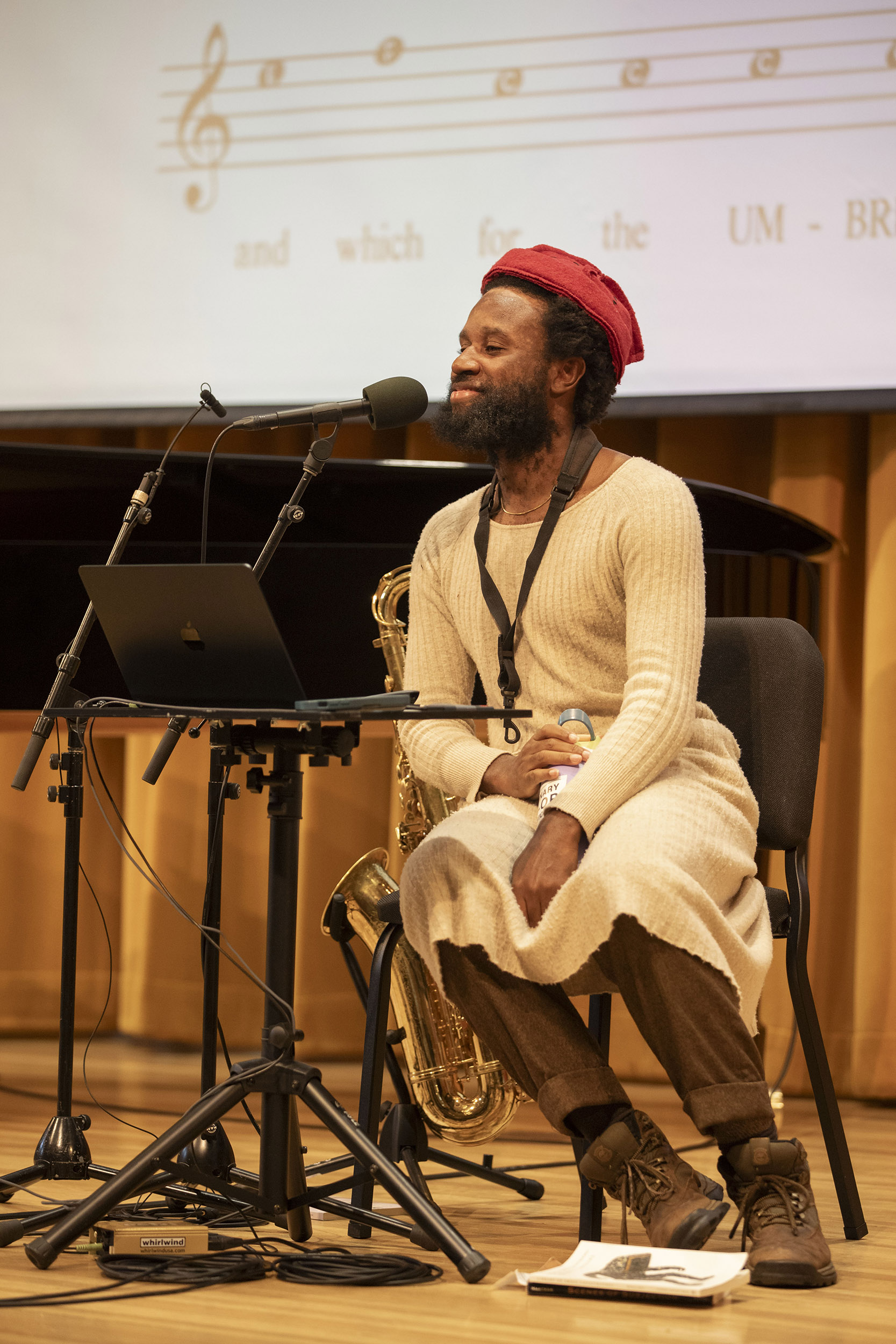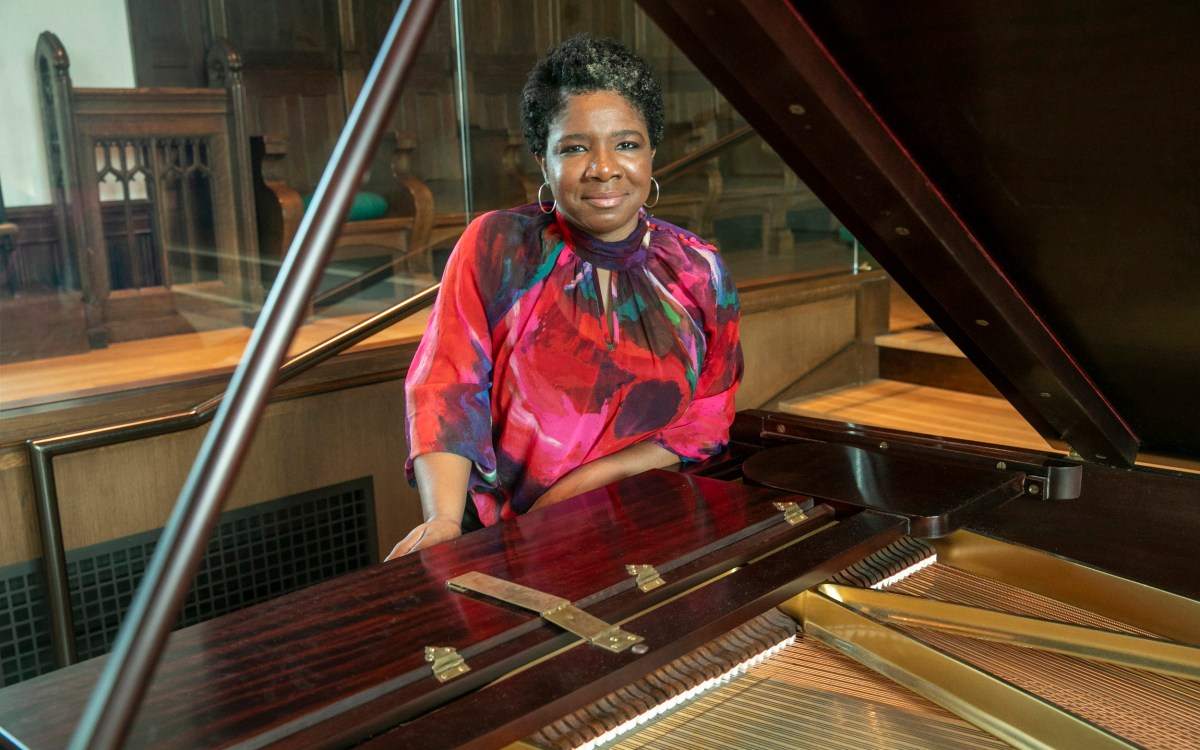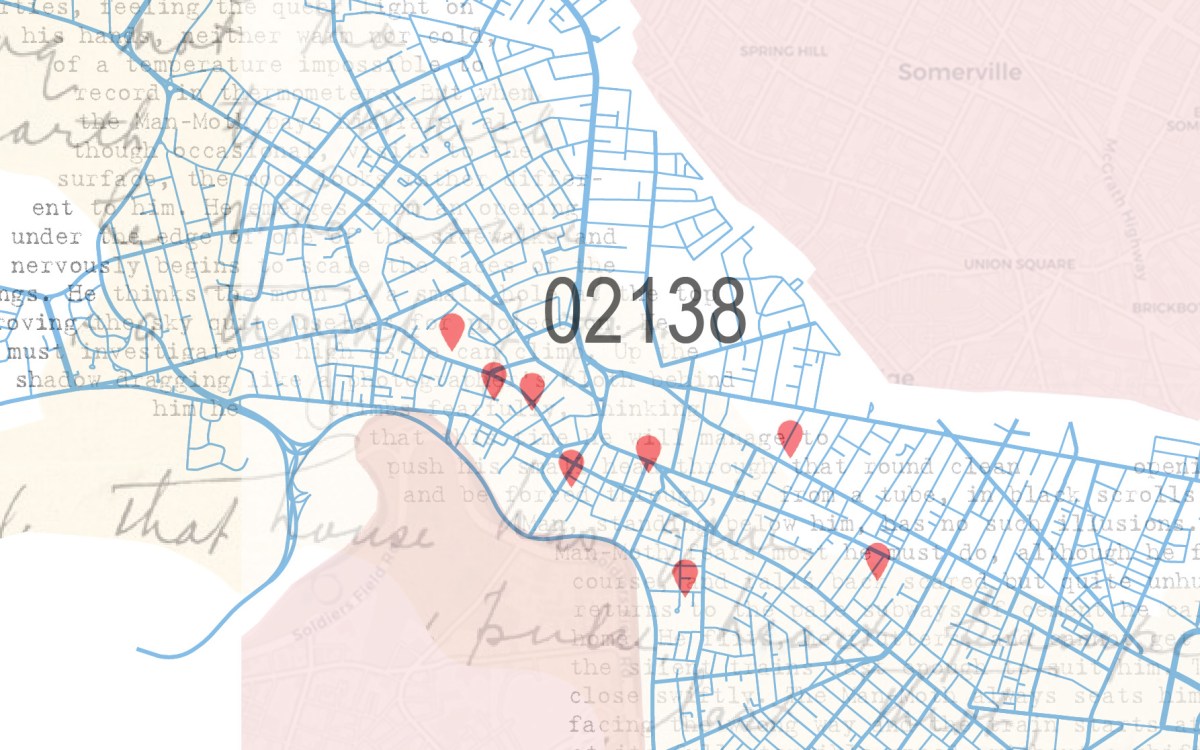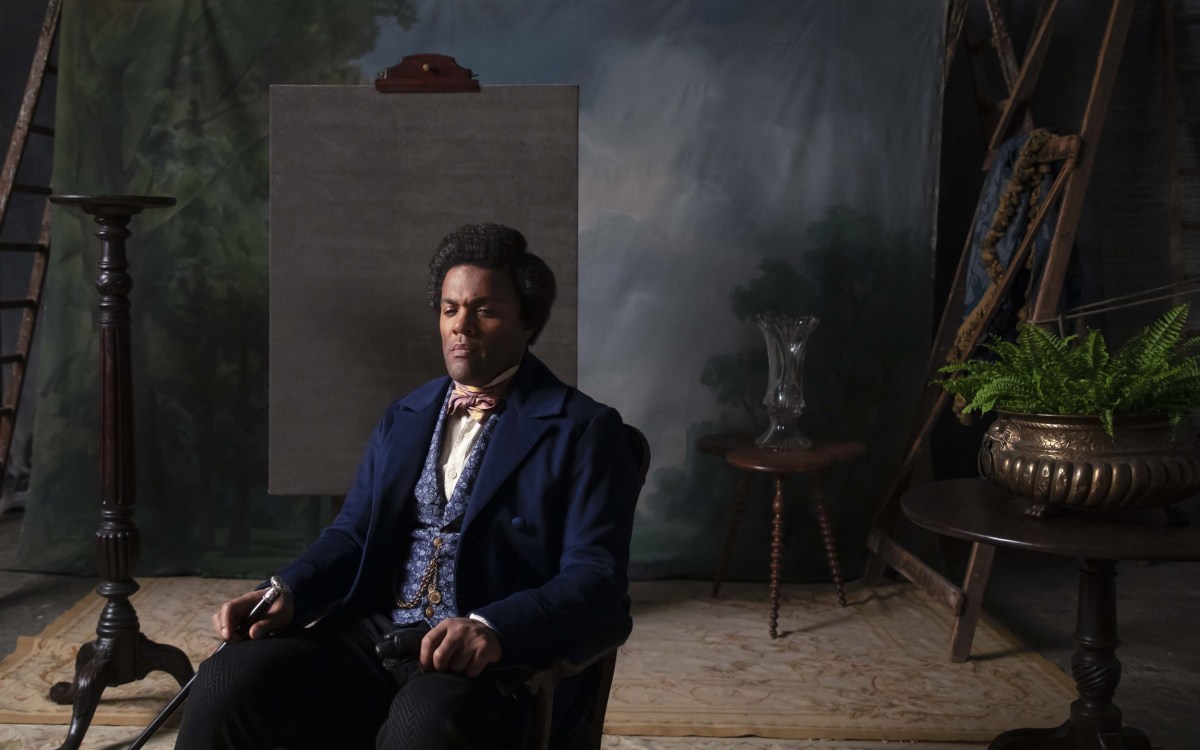In stutter, artist finds voice
Jerome Ellis embraces onetime ‘curse’ in works inspired by nature and Blackness

Jerome Ellis delivers the Louis C. Elson lecture in music at Paine Concert Hall.
Niles Singer/Harvard Staff Photographer
Musician and writer Jerome Ellis, who inherited a stutter from his mother, has come to view his speech as “an heirloom,” or in the words of poet Alison C. Rollins, “tongue — the spoon the ancestors hold.” But he didn’t always feel that way.
“For most of my life I’ve felt that my stutter was something that I inherited that was a curse or a burden or a problem, a pathology, something to get rid of,” Ellis said. “Over time I have tried to see it as something precious that I can cherish.”
The Virginia-based artist, who spells his first name JJJJJerome, explored stuttering as a way of connecting to the past and challenging norms in language in the Louis C. Elson lecture in music at Paine Concert Hall last week.
Ellis performed excerpts from a piece called “Benediction,” a contemplative soundscape that layered live saxophone and vocals over a backing track. Behind Ellis, a screen displayed poetry, a transcript of him speaking with a stutter.
Jerome Ellis plays from ‘Benediction, Movement 2’
transcript
Transcript:
[Contemplative music plays] Ellis: Are stutters vessels carrying the body up a river to a swamp
Research into historical newspaper archives and plant life from the time of slavery in the U.S. shaped the lecture title — “is this stutter a black chant offered by the waterside” — co-sponsored by the Mahindra Center for the Humanities and the Music Department as part of the Sound/Text seminar series.
Historical newspaper notices known as “runaway slave” advertisements that Ellis discovered in his research inspire much of his recent poetry and latest book, “Aster of Ceremonies.” These notices, posted by enslavers, often included a brief description of the freedom-seeker and how much reward money was being offered for his or her capture. Ellis found many notices describing enslaved people who spoke with a stutter. He created poetry by rearranging words and phrases from the ads.
“I have wanted to approach this archive as approaching a kind of lineage of Black radicalism, as well as a dysfluent or stuttering practice,” Ellis said.
Jerome Ellis reads from ‘Benediction, Movement 1’
transcript
Transcript:
Ellis: The stutters may endeavor to return to the creek / stutters born before April was born / stutters may be before speaks / May may be before April / return may be before quest / our Reward is being in quest of stutters / There’s a footnote here that says ‘thank you, James Harrison Monaco, for helping me hear this.’ Is the stutter an arbour / of maybe / The arbor of maybe made ‘I’ into ‘our.’
A Fulbright Fellow who has presented work at Lincoln Center, Ellis’ creative process usually starts with music and evolves into words. When he is at home in Norfolk, Virginia, he will play sustained notes on the organ, or put a recording on a loop while he prepares breakfast, and lines of poems will emerge.
“I’ll start with a line — like the title, ‘is this stutter a black chant offered by the waterside’ — and I might just sit with that line and then try to make the sound of the water with music,” Ellis said.
References to the natural world appear often in Ellis’s work. “Benediction,” for example, lists types of plants that enslaved people were likely to have encountered. Ellis researched 1,000 plant types — ranging from gallberry to hop sedge to yellow wild indigo — that an enslaved woman he read about named Betsy, from the Charleston, South Carolina, area, may have seen, eaten, or used as medicine.
“I think from a very early age, the natural world was a way of spending time with living beings,” Ellis said. “I found my stutter much easier to manage when I was talking to a dog, as opposed to a human, I didn’t have all these anxieties about being judged or being interrupted or being excluded. That felt very safe for me.”
Jerome Ellis sings about the plant goldenrod
transcript
Transcript:
Ellis: Solidago caesia, blue-stem goldenrod. Hey Jeff, would you be able to just fade out the laptop please? Thank you. Solidago canadensis, Canada goldenrod, Rhododendron, Swamp honeysuckle, I love you.
Ellis, who started playing saxophone at age 13, said music served as a comfort early in life.
“The saxophone is very healing because it was a way to express myself with my mouth that didn’t involve speaking, though I do stutter on the saxophone, too,” Ellis said. “It was a great freedom that I felt, and still feel.”







